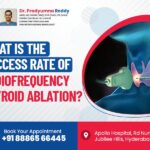Portal vein hypertension is referred to as an increase in the blood pressure within the portal vein. Veins carry blood from the digestive organs such as the stomach, intestine, spleen, and pancreas blend into the portal vein and travel through the liver.
When your liver is damaged, the blood vessels get blocked and prevents blood flow through the liver. This condition results in high pressure in the portal veins often termed as portal vein hypertension.
This abnormal pressure in your portal vein might cause large swollen veins called varices which develop around oesophagus, stomach, or rectum. The swollen veins (varices) can rupture and bleed which results in life-threatening complications.
Causes Of Portal Vein Hypertension Treatment
Cirrhosis of the liver is the major cause of portal vein hypertension. Cirrhosis is a scarring disease of the liver where the healthy liver tissue is replaced by scar tissue.
This scar tissue prevents the blood flow to the liver and increases the blood pressure inside the portal vein. Cirrhosis can be developed due to various causes, which include:
- Drinking alcohol
- Fatty liver disease
- Hepatitis infections
- Autoimmune diseases like primary sclerosing cholangitis and biliary
- cirrhosis
- Liver congestion due to chronic heart failure
- Use of certain NSAIDs and some antibiotics for a long-term
- Cystic fibrosis
- Building up of iron in your body
Other causes of Portal Hypertension in people without cirrhosis include:
- Blood clots in your portal vein
- Chronic bacterial or parasitic infections like schistosomiasis
- Poorly developed bile ducts
- Weak immune system
- Crohn’s disease
- Focal nodular hyperplasia
- Inherited disorders such as Adams-Oliver syndrome and Turner syndrome
Sometimes the causes might be unknown. People over 50 years, obesity, type 2 diabetes are some of the risk factors that develop portal hypertension.
Symptoms Of Portal Vein Hypertension Treatment
In some people, the symptoms of portal hypertension disease are not visible until it advances, but some people may experience it in the early stages. However, they develop symptoms such as:
- Varices (enlarged veins)
- Internal bleeding due to ruptured varices, which causes black or bloody stools
- Ascites is a condition that occurs as a result of fluid collection within the inner abdominal wall and the intestine
- Hepatic encephalopathy
- Anaemia, or iron deficiency
- Reduced white blood cells
- Splenomegaly or enlargement of the spleen
Diagnosis Of Portal Vein Hypertension Treatment
Portal hypertension is challenging to find from symptoms alone. However, if you are suspected to have portal hypertension either in your medical history or current health status. A doctor suggests following diagnosis tests:
- Ultrasound imaging to observe internal structures, blood flow in the portal vein
- Elastography to estimate the elasticity of liver tissue (low elasticity may indicate scar tissue)
- Imaging tests like CT scans and MRI scans
- Blood tests
- Angiogram
- Endoscopy
If the above tests don’t yield conclusive results, a doctor suggests performing a liver biopsy, a process of taking a small piece of liver tissue for lab tests. A pathologist analyses the tissue sample for the signs of any liver disease.
Treatment For Portal Vein Hypertension Treatment
The treatment for portal vein hypertension focuses on treating the complications. The doctor suggests medications, endoscope procedures, radiology procedures and surgery depending on the severity condition and functioning of your liver.
Medications
- Beta-blockers which helps to lower blood pressure
- Vasodilators which reduces the risk of bleeding
- Lactulose to treat symptoms of hepatic encephalopathy
- Antibiotics to treat bacterial infections
- Diuretics to discharge excess fluid and might relieve edema and ascites
If medication and lifestyle changes don’t show any improvement, your doctor suggests the following procedures.
Transjugular intrahepatic portosystemic shunt: TIPSS is one of the most successful procedures performed by Interventional Radiologist to treat portal vein hypertension and its complications, particularly variceal bleeding.
The equipment used in this procedure typically consists of x-ray or ultrasound equipment, a monitor to view the images, a stent, and a balloon-tipped catheter. The interventional radiologist places a stent in the portal vein to reroute the blood flow and decreases the blood pressure.
The stent is placed in the correct position and expanded using the inflatable balloon with help of a catheter. This stent forms a channel bypassing the liver. This channel helps to reduce pressure in your portal vein.
As a result, it reduces portal hypertension, varices are less likely to rupture & bleed. Some other complications like ascites (fluid in the abdomen) and hepatic hydrothorax (fluid accumulation between the lungs and the walls of the chest) might go away.
The TIPSS procedure helps to control bleeding quickly in more than 90% of patients. Approximately in 90% of patients, a stent might reduce the cause of varices to bleed again in future.
BRTO/CARTO
These are specialized procedures with the common goal of blocking enlarged blood vessels that cause bleeding in patients suffering from liver disease and portal hypertension.
Balloon-occluded Retrograde Transvenous Obliteration (BRTO): It is a minimally invasive endovascular technique used as an alternative option to TIPS for treating gastric varices. The procedure blocks the enlarged blood vessels and reduces the risk of rupture.
The procedure involves inserting a balloon catheter through your vein in the thigh or neck and the catheter is guided to your liver. The catheter is then directed to the shunt and then the balloon is inflated to block the dilated vessels.
Coil-Assisted Retrograde Transvenous Obliteration (CARTO): It is a modified version of BRTO procedure. The procedure involves using dual microcatheter technique. One microcatheter is placed proximally at shunt while another catheter is advanced and placed distally closer to varices.
Coil embolization is done through proximally placed microcatheter and gelfoam embolization of varices is done through distally microcatheter.
Variceal ligation: the procedure helps to prevent bleeding from ruptured veins by binding the enlarged veins with a rubber band.
Paracentesis: the procedure involves draining of excess fluid from the abdomen by a hollow needle. It is used to treat severe ascites.
Liver transplant: In case of end-stage liver failure or liver cancer, the surgeon suggests replacing the damaged liver by a healthy liver from a donor. This is a complex surgical procedure and is usually associated with significant morbidity and mortality.
Portal vein hypertension can be treated successfully in most of the people. However, if you have any problems or want to know more information about treatment procedures consult Dr. Pradyumna Reddy, one of the best interventional radiologists in Hyderabad.
He has more than five years of experience in treating portal vein hypertension through Transjugular intrahepatic portosystemic shunt (TIPS).





